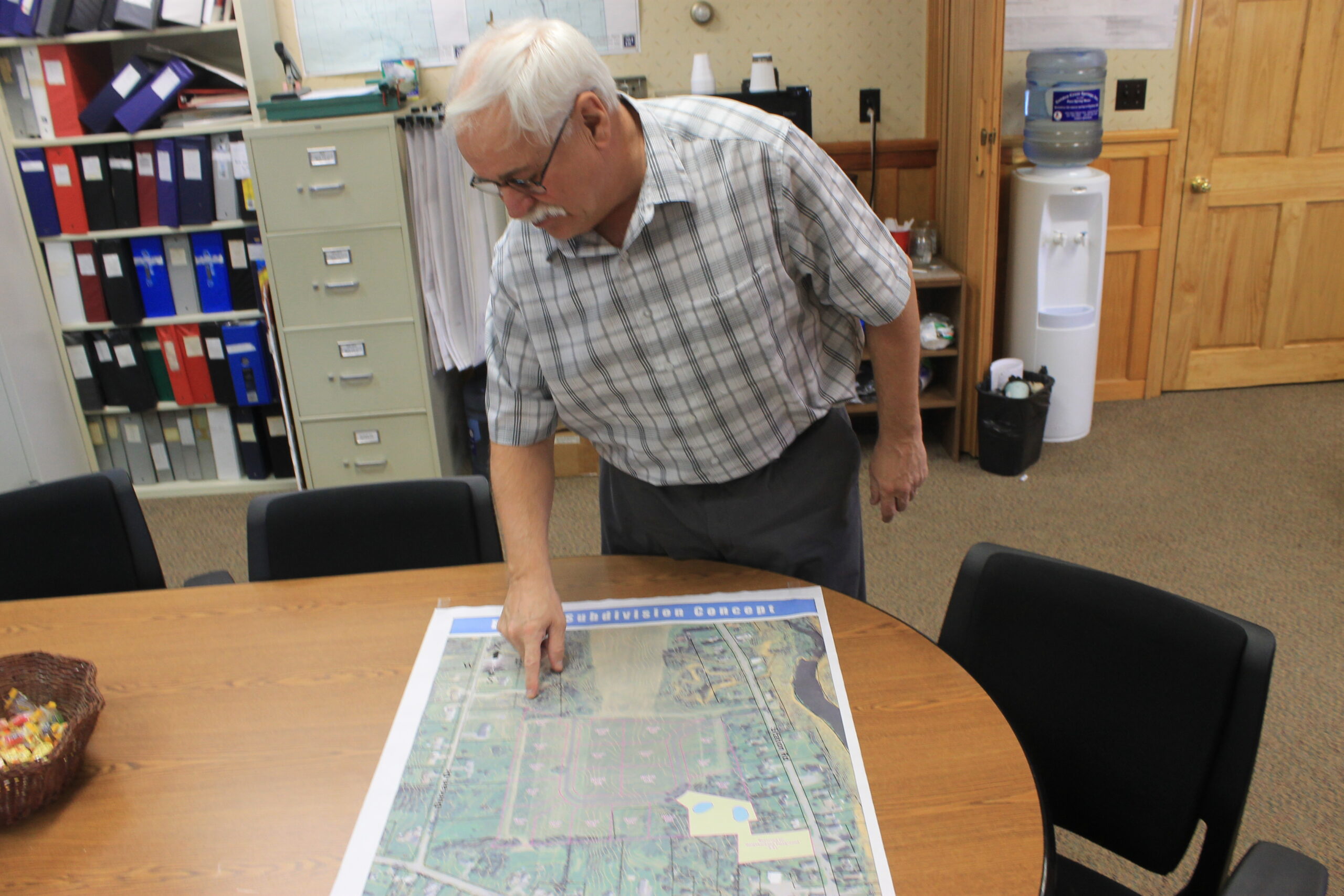
In the 2010 census, Easton was the only Aroostook County municipality to record population growth, thanks largely to a wave of Amish settlers.
Now, with low taxes, small schools, new subdivisions and close proximity to Presque Isle, Easton is on track to garner dozens of new homeowners and families, in addition to the growing Amish community, said town manager Jim Gardner.
Easton has taken a novel approach to the lack of the new housing stock: buying parcels of land, creating subdivisions and selling house lots.

This home on Perry Drive in Easton is located on the site of the first subdivision spearheaded by the town in 2010. Easton is now selling home lots in two other subdivisions near the village center.
(Anthony Brino | BDN)
“We don’t have a lot of land for sale here, so it’s hard for people to go out and find land to build homes on,” Gardner said. “The Amish have taken over a huge part of the town east of Route 1A and bought up a lot of big farms.”
Easton first entered the real estate business in 2010, when the town purchased a former farm on Perry Road and subdivided it into 18 lots, each about an acre in size, that are all now occupied.
“After that got full, it was like wow,” Gardner said. “If Perry Drive is such a success, let’s look at something else.”
In the last two years, the town jumped in to buy three other parcels of land on Fuller Road, Duncan Drive and Station Road.
The subdivision off of Duncan Drive, dubbed Moose Meadows, has sold three of 10 house lots each about an acre in size, at a price of $12,000 per acre. The town purchased the 11 acre Duncan Drive parcel for $28,000 and the 26 acre Station Road parcel for $56,000.
Gardner said the town paid for surveying, a road and electrical poles, while the new homeowners pay for electrical connections, water wells and septic systems.
Easton hasn’t used tax dollars to buy the land, Gardner said. The financing is through an account that dates back to the 1990s, when McCain Foods granted Easton and Washburn each $600,000 through the federal Urban Development Action Grant Program. (At the time, McCain Foods operated a factory in Washburn as well as the current one in Easton.) Gardner said Easton put that money in the bank and created a revolving fund to make small business loans and finance town ventures.
“Our goal is not to make money off the real estate,” Gardner said, mentioning that a few local realtors have expressed skepticism about the town’s land dealings. “Our intent is to sell the lot and have someone build a house and live in Easton. Once you put that $150,000 or $200,000 house on it, the town is collecting taxes every year.”
Easton had a population of 1,287 in 2010, as measured by the last Census, and now it’s at about 1,350, Gardner estimated.
Some of that growth is from Amish families, who commonly have five or more children, but some is also from new families moving to the town, Gardner said.
“There are five new homes going up around town,” he said. “The school system is a huge draw because we’re small. Our class sizes aren’t very big and 98 percent of graduates go on to college.”
Easton’s school system grew by 47 pupils this year due to the closure of the Cornerstone Christian Academy in Presque Isle and Gardner expects some of those families, from towns around central Aroostook, will be looking to settle in Easton.
Gardner said the newest subdivisions are a part of the town’s pitch to potential new residents: affordable taxes and house lots within walking distance of the schools, local parks and village center.
With a mill rate of $17 per $1,000 of property value, Easton’s taxes are among the lowest in central Aroostook County, thanks in part to the two large factories, Huber Engineered Woods and McCain.
Those low taxes are a draw to both middle and higher income earners, Gardner said, mentioning that one new resident is a recently hired physician at The Aroostook Medical Center.
In tandem with the housing effort, Gardner said the town also recently adopted its first-ever requirement for having a building permit. There is no fee, but submitting paperwork for new buildings will make it easier for the town and property owners to have the buildings assessed, Gardner said.
“People are interested in coming to Easton. It’s a great thing.”







